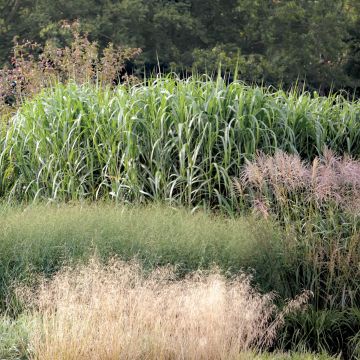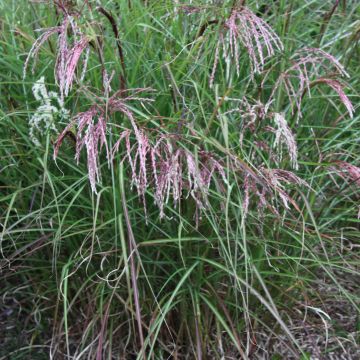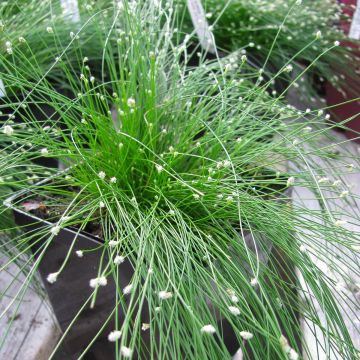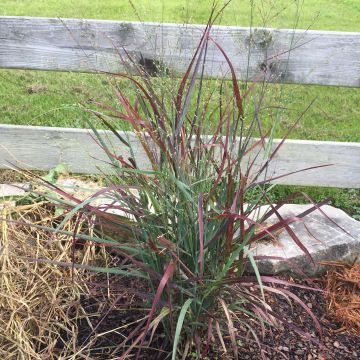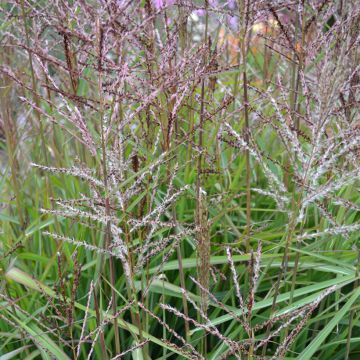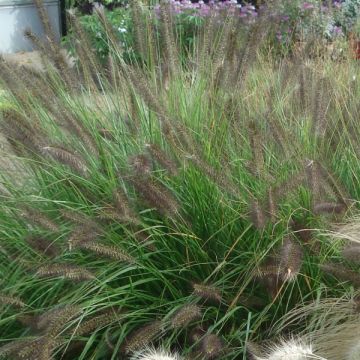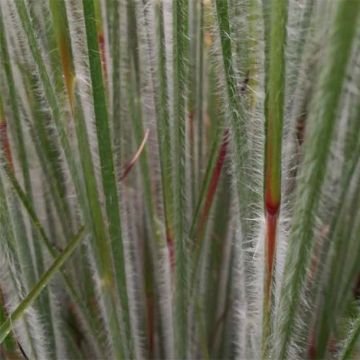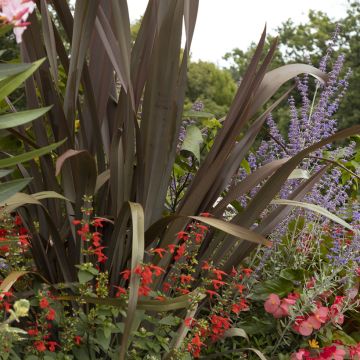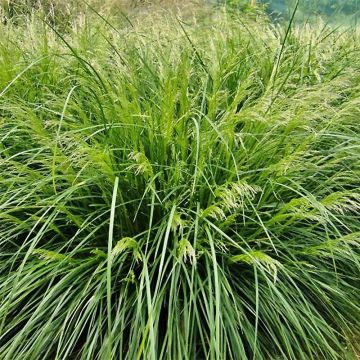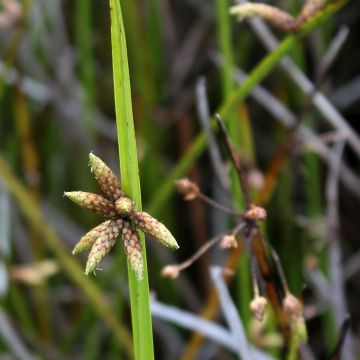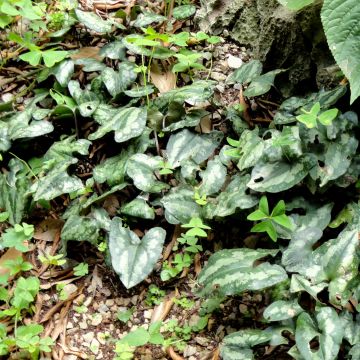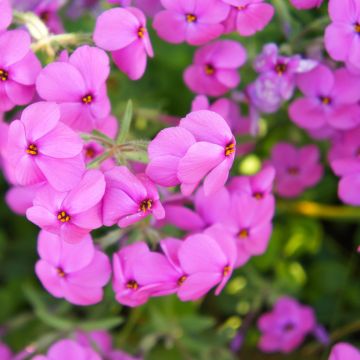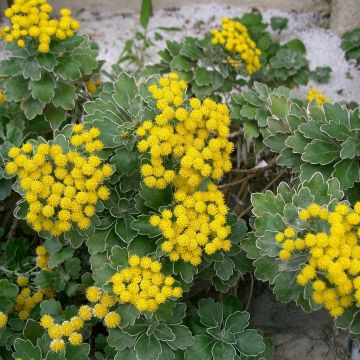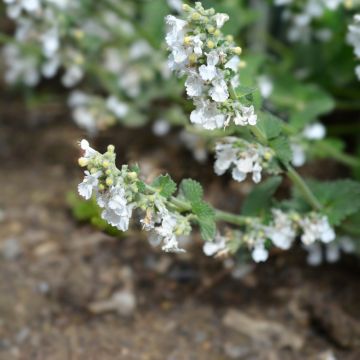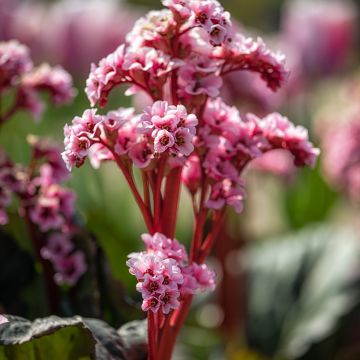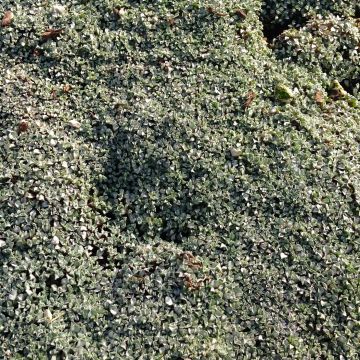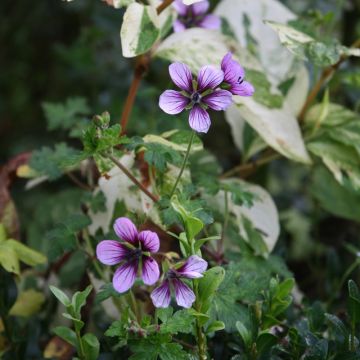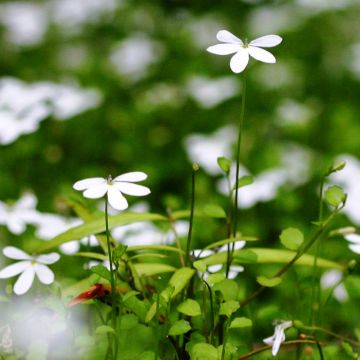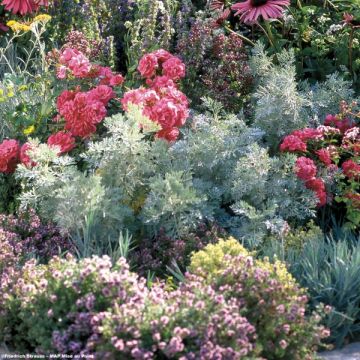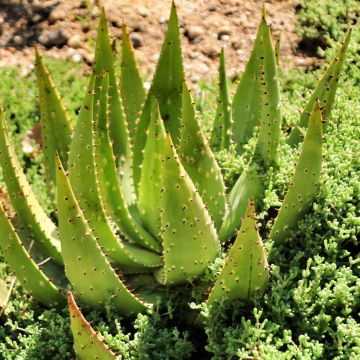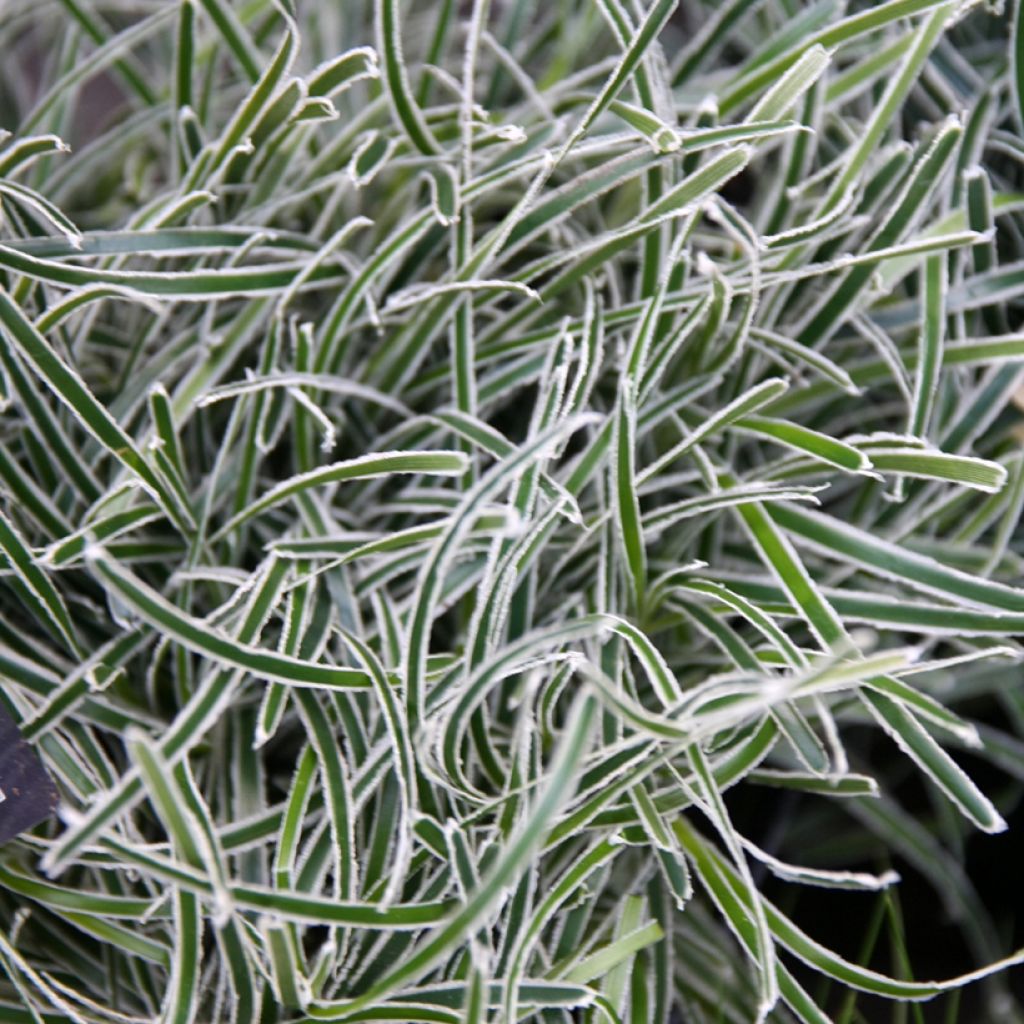

Ficinia truncata Ice Crystal
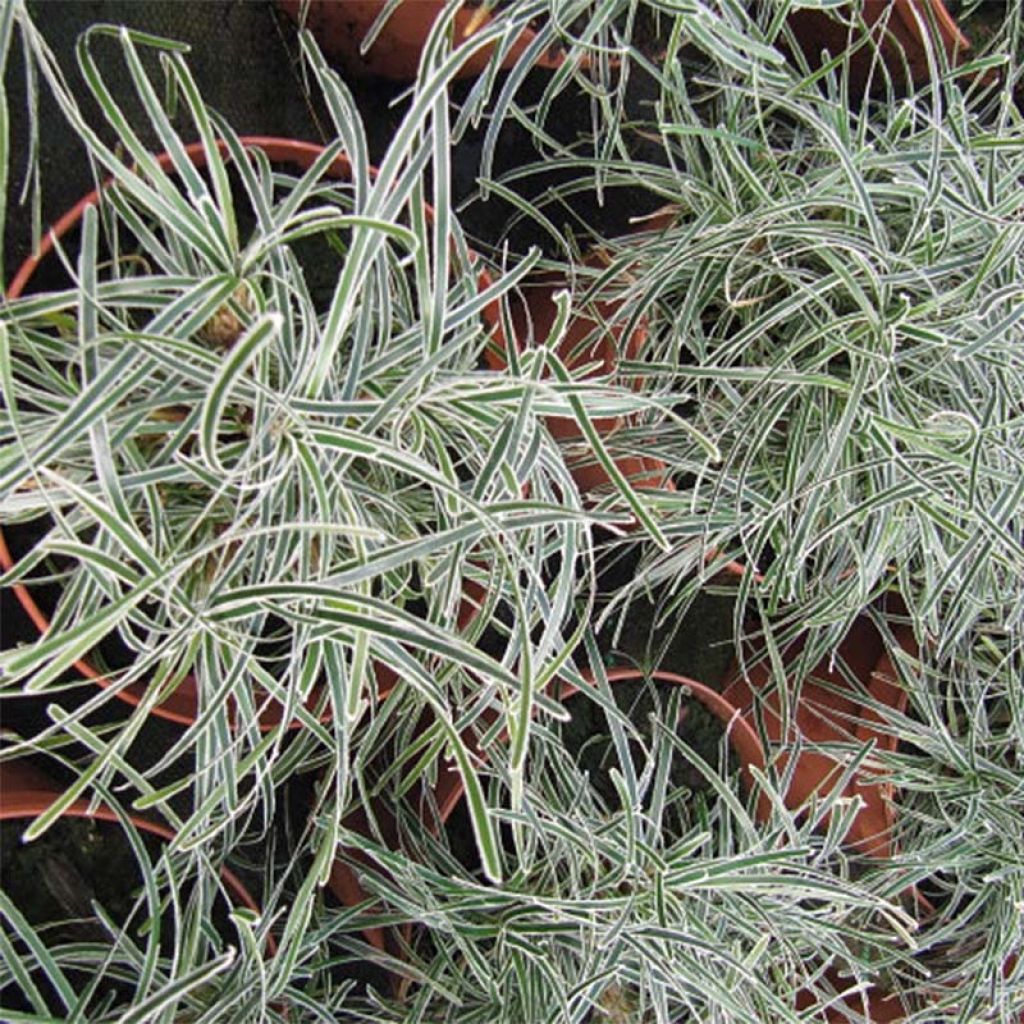

Ficinia truncata Ice Crystal
Ficinia truncata Ice Crystal
Ficinia truncata Ice Crystal
Frosted Ficinia
Effect truly frosted. The clump is dense, compact, a very beautiful ball plant.
Charlyne, 20/04/2022
This item cannot be shipped to the selected country
Delivery charge from €5.90
More information
Schedule delivery date,
and select date in basket
This plant carries a 12 months recovery warranty
More information
We guarantee the quality of our plants for a full growing cycle, and will replace at our expense any plant that fails to recover under normal climatic and planting conditions.
From €5.90 for pickup delivery and €6.90 for home delivery
Express home delivery from €8.90.

Does this plant fit my garden?
Set up your Plantfit profile →
Description
If the Ficinia truncata 'Ice Crystal' is also called the Frosty Ficinia, it is because of the frosty appearance of its beautifully edged gramineous leaves in white on a dark green background. With its miniature grass-like look, this small evergreen perennial that grows in a slightly "disheveled" clump brings a touch of originality and light to a balcony, rockery, or border, all year round. Not very hardy, it is however easy to grow in the sun, in a well-drained, preferably limestone soil that remains moist even in summer.
The Ficinia truncata is a plant in the Cyperaceae family, just like its famous cousins the Carex. It is part of those perennial plants that are often referred to as grasses, due to their resemblance. It is a South African botanical species found along the rivers in the Cape region in particular. Only its lovely variegated form 'Ice Crystal' is currently available in cultivation. This small plant with short rhizomes is not invasive. It forms a very compact clump, pleasantly disorderly, reaching 10 cm (4in) in height and 30 cm (12in) in diameter. Its evergreen leaves are gramineous, ribbon-like, 10 cm (4in) long, with a truncate white-dotted tip. The dark green color that adorns them is also bordered by a very bright white margin. They are sheathed at the base, upright and slightly curved towards their tip. The flowering takes place in early summer, in June: from the foliage emerge slender, erect flower spikes, 20 to 30 cm (8 to 12in) tall, bearing dense brown spikelets. The seeds can be dispersed by ants. The hardiness of this plant is around -10°C (14°F) for short periods and if the soil is dry.
The Ficinia truncata 'Ice Crystal' is a trendy and refined little plant, with a minimalist style, that will form a beautiful bouquet of frosted foliage overflowing from pots that can easily be protected from severe cold in winter. Its graphic design does not require the presence of another plant by its side, but on the other hand, it will bring a lot of lightness to the more lush foliage surrounding it. For a magical effect, plant it en masse, in a mild climate contemporary garden, for example not far from a water feature or in a not too dry rockery.
Report an error about the product description
Ficinia truncata Ice Crystal in pictures
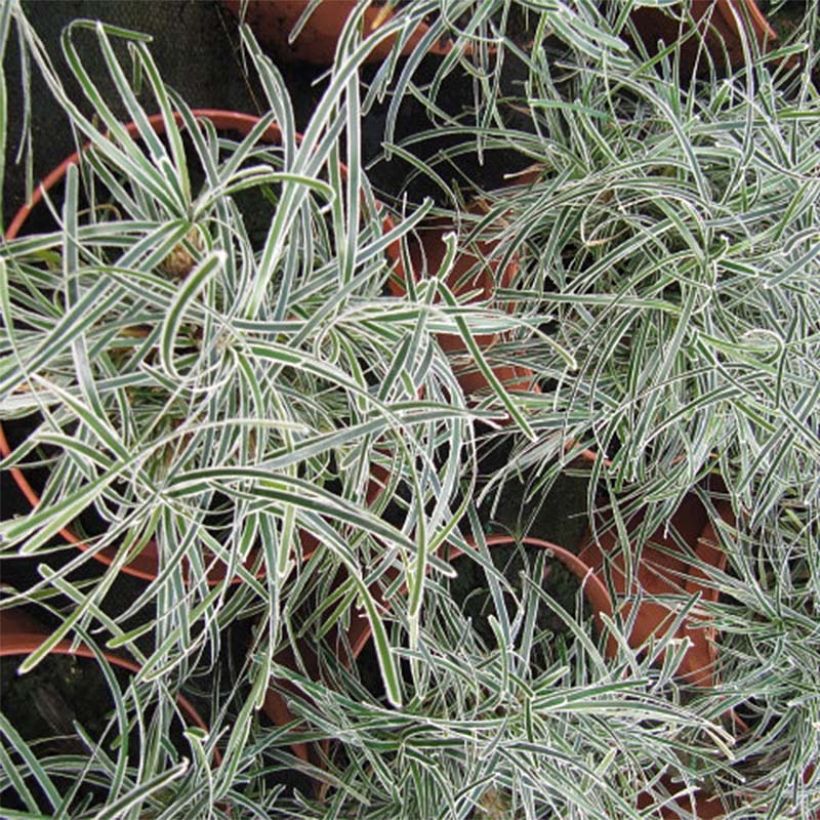

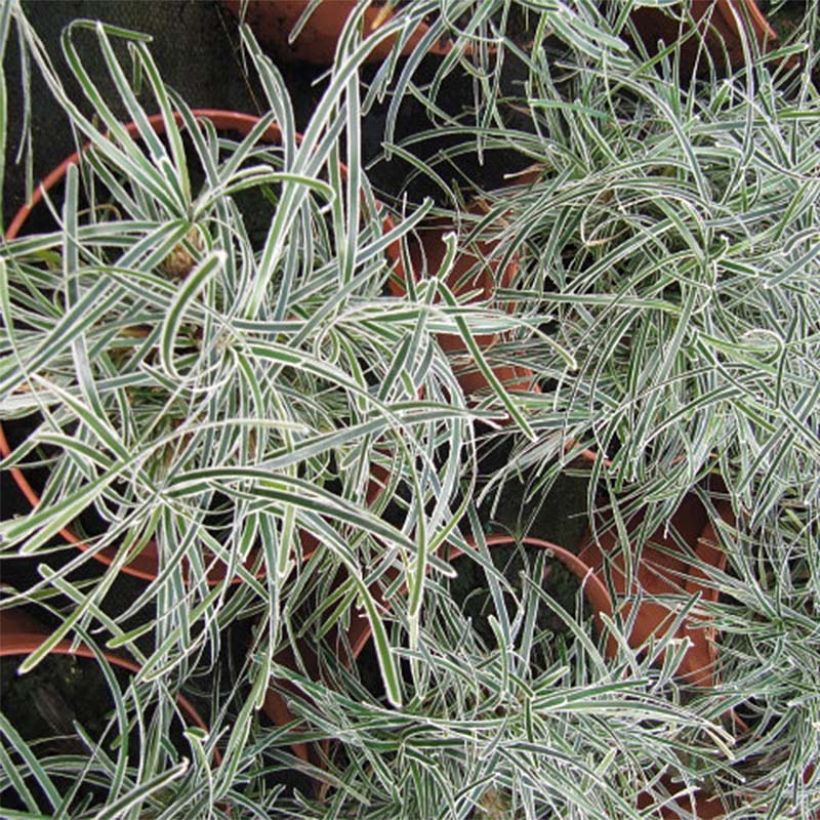

Flowering
Foliage
Plant habit
Botanical data
Ficinia
truncata
Ice Crystal
Cyperaceae
Frosted Ficinia
South Africa
Other Ornemental grasses A to Z
Planting and care
The Ficinia truncata is preferably planted in pots or in open ground in our mild regions (it perishes below -8/-10°C (17.6/14°F)). It appreciates soils with a limestone tendency, but light, rich in compost and well-drained. It tolerates excess humidity poorly in winter, but requires a soil that remains fresh from spring to autumn. Choose a sunny exposure sheltered from strong winds. Water abundantly at planting and throughout the growth period if cultivated in pots. Avoid massive fertilizer inputs. Remove damaged foliage during vegetation. Overwinter your frosty Ficinia in a slightly heated veranda or in a greenhouse of orangery type, kept frost-free.
Planting period
Intended location
Care
-
, onOrder confirmed
Reply from on Promesse de fleurs
Ground cover perennials
Haven't found what you were looking for?
Hardiness is the lowest winter temperature a plant can endure without suffering serious damage or even dying. However, hardiness is affected by location (a sheltered area, such as a patio), protection (winter cover) and soil type (hardiness is improved by well-drained soil).

Photo Sharing Terms & Conditions
In order to encourage gardeners to interact and share their experiences, Promesse de fleurs offers various media enabling content to be uploaded onto its Site - in particular via the ‘Photo sharing’ module.
The User agrees to refrain from:
- Posting any content that is illegal, prejudicial, insulting, racist, inciteful to hatred, revisionist, contrary to public decency, that infringes on privacy or on the privacy rights of third parties, in particular the publicity rights of persons and goods, intellectual property rights, or the right to privacy.
- Submitting content on behalf of a third party;
- Impersonate the identity of a third party and/or publish any personal information about a third party;
In general, the User undertakes to refrain from any unethical behaviour.
All Content (in particular text, comments, files, images, photos, videos, creative works, etc.), which may be subject to property or intellectual property rights, image or other private rights, shall remain the property of the User, subject to the limited rights granted by the terms of the licence granted by Promesse de fleurs as stated below. Users are at liberty to publish or not to publish such Content on the Site, notably via the ‘Photo Sharing’ facility, and accept that this Content shall be made public and freely accessible, notably on the Internet.
Users further acknowledge, undertake to have ,and guarantee that they hold all necessary rights and permissions to publish such material on the Site, in particular with regard to the legislation in force pertaining to any privacy, property, intellectual property, image, or contractual rights, or rights of any other nature. By publishing such Content on the Site, Users acknowledge accepting full liability as publishers of the Content within the meaning of the law, and grant Promesse de fleurs, free of charge, an inclusive, worldwide licence for the said Content for the entire duration of its publication, including all reproduction, representation, up/downloading, displaying, performing, transmission, and storage rights.
Users also grant permission for their name to be linked to the Content and accept that this link may not always be made available.
By engaging in posting material, Users consent to their Content becoming automatically accessible on the Internet, in particular on other sites and/or blogs and/or web pages of the Promesse de fleurs site, including in particular social pages and the Promesse de fleurs catalogue.
Users may secure the removal of entrusted content free of charge by issuing a simple request via our contact form.
The flowering period indicated on our website applies to countries and regions located in USDA zone 8 (France, the United Kingdom, Ireland, the Netherlands, etc.)
It will vary according to where you live:
- In zones 9 to 10 (Italy, Spain, Greece, etc.), flowering will occur about 2 to 4 weeks earlier.
- In zones 6 to 7 (Germany, Poland, Slovenia, and lower mountainous regions), flowering will be delayed by 2 to 3 weeks.
- In zone 5 (Central Europe, Scandinavia), blooming will be delayed by 3 to 5 weeks.
In temperate climates, pruning of spring-flowering shrubs (forsythia, spireas, etc.) should be done just after flowering.
Pruning of summer-flowering shrubs (Indian Lilac, Perovskia, etc.) can be done in winter or spring.
In cold regions as well as with frost-sensitive plants, avoid pruning too early when severe frosts may still occur.
The planting period indicated on our website applies to countries and regions located in USDA zone 8 (France, United Kingdom, Ireland, Netherlands).
It will vary according to where you live:
- In Mediterranean zones (Marseille, Madrid, Milan, etc.), autumn and winter are the best planting periods.
- In continental zones (Strasbourg, Munich, Vienna, etc.), delay planting by 2 to 3 weeks in spring and bring it forward by 2 to 4 weeks in autumn.
- In mountainous regions (the Alps, Pyrenees, Carpathians, etc.), it is best to plant in late spring (May-June) or late summer (August-September).
The harvesting period indicated on our website applies to countries and regions in USDA zone 8 (France, England, Ireland, the Netherlands).
In colder areas (Scandinavia, Poland, Austria...) fruit and vegetable harvests are likely to be delayed by 3-4 weeks.
In warmer areas (Italy, Spain, Greece, etc.), harvesting will probably take place earlier, depending on weather conditions.
The sowing periods indicated on our website apply to countries and regions within USDA Zone 8 (France, UK, Ireland, Netherlands).
In colder areas (Scandinavia, Poland, Austria...), delay any outdoor sowing by 3-4 weeks, or sow under glass.
In warmer climes (Italy, Spain, Greece, etc.), bring outdoor sowing forward by a few weeks.

































